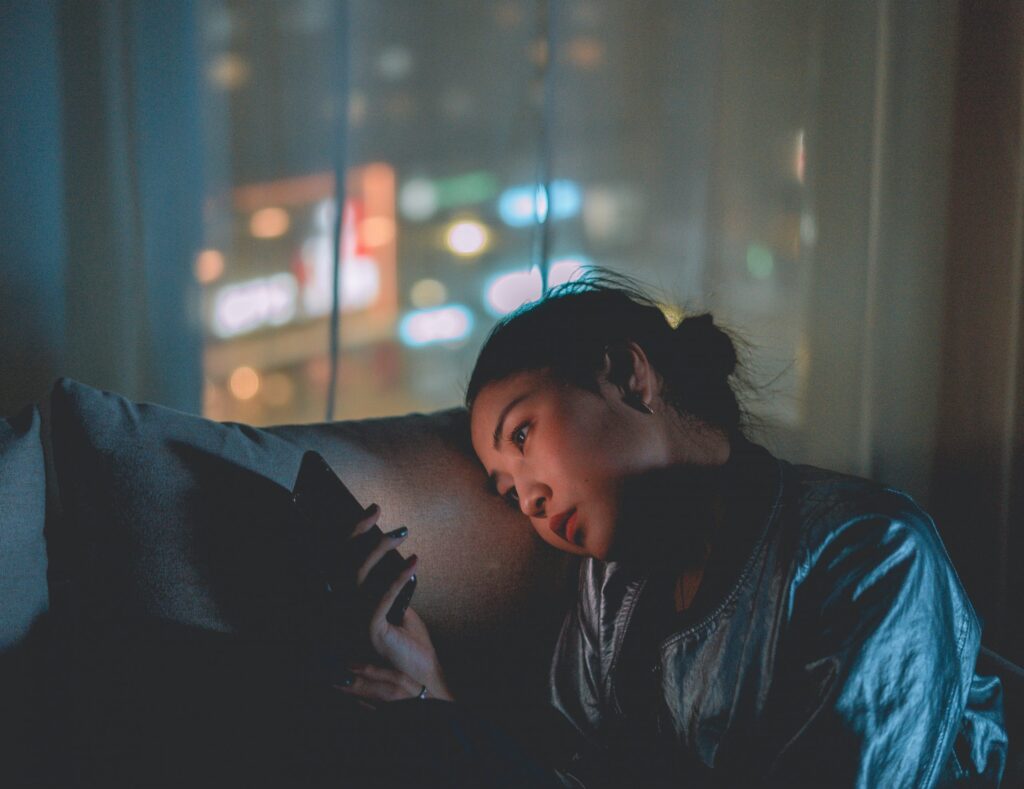How Social Media Culture Takes its Toll on Girls and their Bodies

how social media culture takes its toll on girls and their bodies
Social media usage — whether it be Facebook, Instagram, or TikTok — is a huge staple of modern life, to the point that most of us may not think twice about the information that we consume online. But there is growing evidence to suggest that increased social media usage can be related to a variety of body image and disordered eating issues, especially in young girls.
Why Social Media Affects Girls More Than Boys
According to a study conducted by The Lancet Child & Adolescent Health, social media use is affecting the mental health of girls more than boys, but it is not social media itself that causes harm. Instead, researchers suggest it is a combination of being exposed to cyberbullying and a disruption of healthy habits, like missing out on sleep or not getting enough exercise due to excessive social media use.
Though boys are certainly affected by social media as well, the study showed that the way they use social media is different, which results in their mental health being affected in different ways.
For girls in particular, the more often they checked social media, the more stress they experienced. But this effect was not as prevalent or as clear in boys.
The researchers also made it a point to emphasise that the results of the study also showed that it is not social media itself that is inherently the problem but how girls are using it. This suggests that social media use among teens ‘need not be as negative as often assumed’.
The key is moderation. Girls will be less exposed to cyberbullying and have fewer problems with isolation, depression, and loss of sleep if they use social media less or limit their use of it at certain times, such as right before bed.
Social Media and Unrealistic Body Expectations
While the research above suggests that it is the habits of girls rather than social media itself that is the core problem, there is no denying that not all content is created with the well-being of girls in mind. In other words, not all content is created equal, and some content is more problematic than others.
New research by Griffith University revealed that watching just seven minutes of beauty content is enough for teens to experience significant amounts of shame about their bodies and looks. And other experts fear that the new trend of short videos focused on food and weight loss, coupled with the pandemic, has led to a spike in eating disorders.
Now, because these videos are so short, teens can consume so much more in a shorter amount of time, which means they can be easily exposed to more problematic content in a shorter amount of time.
The filters used within Instagram and TikTok are also part of the problem. Now, everyone is airbrushed and some of these filters are so good that you can’t even tell that a filter is being used. This means girls are just scrolling through countless videos every day that all show other girls and women that appear to have perfect faces and bodies, but it’s not real.
As such, experts from the Butterfly Foundation — an organisation that provides eating disorder support — believe ‘there needs to be a systemic and societal change to address these concerns’.
Yes, social media isn’t inherently bad, and the habits we are forming surrounding social media use are. However, you can also argue that this leaves the blame on girls and not on the companies and systematic structures that keep problematic content online and easily available for young girls to see.
The Link Between Disordered Eating and Social Media Usage
Taking it back to the problem of eating disorders, diet culture, and weight loss is a huge concern with social media. In particular, there is a huge issue with influencers and people who aren’t officially trained or certified offering diet and nutrition advice to these young, impressionable girls.
It’s diet culture in disguise. There are so many accounts and content creators today that claim to be knowledgeable and offer advice on what to eat, but they are really just perpetuating toxic diet fads. A significant amount of this information is spreading nutrition misinformation, which can be incredibly harmful as is, but especially for girls that have actual disorders and conditions that need to be treated by a professional.
Take the keto diet, for example. This diet trend has been around for a while now, but with so many foods and nutrition influencers on social media sites like TikTok, videos about keto and other fad diets can spread like wildfire. But the keto diet was not originally meant for the average person.
The ketogenic diet dates back to the 1920s when it was developed to help treat patients with epilepsy. But now, it has become one of the most popular diet trends. Many claim that it works well for weight loss and even mental health issues, but putting your body into ketosis can be dangerous and should technically only be done under a doctor’s supervision.
Unfortunately, with how fast misinformation spreads on social media, impressionable girls and young women are assuming that keto is perfectly safe, and they don’t even think to mention it to their doctors.
In addition, other general food and diet trends on social media are the source of so many problems and eating disorders in adolescents. For example, the “what’s on my plate” trend or the “what I eat in a day” trend is incredibly popular on social media. But these videos cause girls to hyper-focus on what they are eating, which can cause stress and anxiety over calorie counting.
How To Prevent the Negative Effects of Social Media Usage and Support Healthier Body Image for Girls
So, what can be done about all this negativity on social media? Because again, it’s not that social media is inherently bad, but that there is harmful content.
This is the concern of many parents today. They know that preventing their teen from using social media altogether is likely an impossible feat, so they just want to know how to protect their kids from unwanted content.
For young kids, there are parental control apps that can help limit the content your kid sees. For teens and young adults, however, it’s more about teaching them healthy behaviours when it comes to social media use.
Parents can also sit down and talk to their teens about the content they are seeing and how it makes them feel. They can offer advice on how to take content with a grain of salt, especially if it’s created by someone who isn’t a trained professional, and talk to them about mental health resources if there is a significant concern. The important thing is to create a safe space that welcomes open communication so that they are more inclined to talk about their concerns and take any advice on board.
Charlie Fletcher is a freelance writer passionate about workplace equity, and whose published works cover sociology, politics, business, education, health, and more. You can see more of her work by visiting her portfolio.






